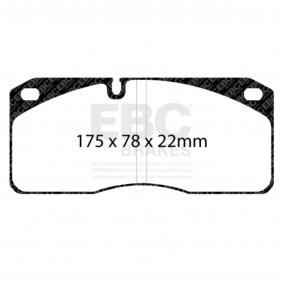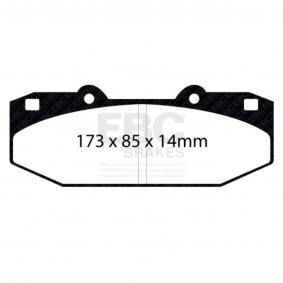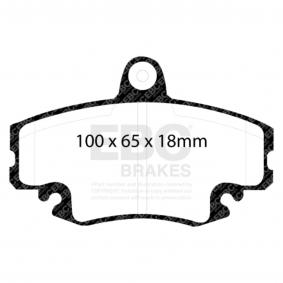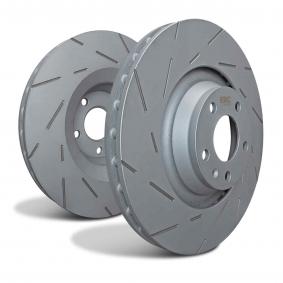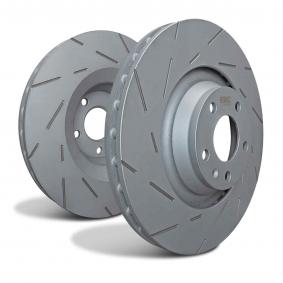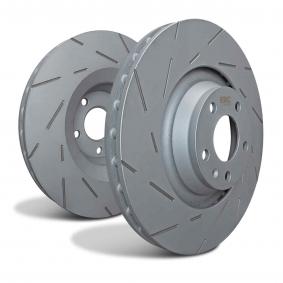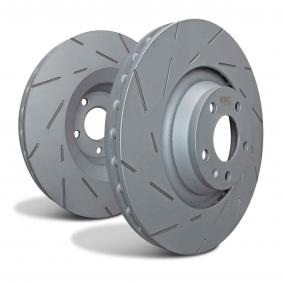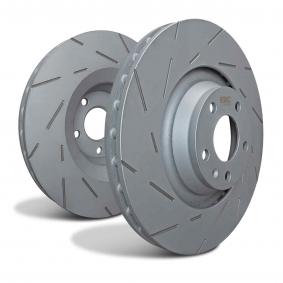Outlet discounts on thousands of products !
Outlet discounts on thousands of products !
- Home
-
PAGID Brake Pads Shape n°8006 Compound RSL1
PAGID
Brake Pads Shape n°8006 Compound RSL1
- to discover
-
new
-
new
-
new
-
new
-
new
-
new
-
new
-
new
PAGID Brake Pads Shape n°8006 Compound RSL1
RSL1 is a low metallic resin bonded material containing steel and aramid fibers with high heat resistance. It maintains a constant friction level over a wide range of temperatures. Its low wear rate and disc friendliness make this material appropriate for endurance races.
Used in GT cars, Touring cars and prototype endurance racing. Due to the high friction and good modulation, often used in sprint races as well.
All PAGID products are made in Germany!
Length x Width : 130,5 mm x 75,5 mm
Thickness : 19 mm
Car applications, dimensions and pad schemes are supplied as a guide. Please check your assembly before ordering
Rear brake pads for :
Porsche 997 3.6 C & 3.6 C4 (years 2008 à 2011)
Porsche 997 all models (years 2005 à 2012) - NB : ceramic brakes
Porsche 997 GT2 & GT2 RS (years 2007 à 2012)
Porsche 997 GT3 (years 2007 à 2011)
Porsche 997 GT3 Cup (years 2005 à 2012) - NB : 19 mm thick pads
Porsche 997 GT3 Rally (years 2005 à 2012)
Porsche 997 GT3 RS (years 2007 à 2012)
Porsche 997 Turbo (years 2006 à 2012)
On vehicle bedding-in procedure:
Step 1 - Breaking-in
Creating a perfect contact-pattern between rotor and brake pad surface.
10 stops with mid pressure and low temperature from 150 km/h (90 MPH) to approximately 80 km/h (50 MPH).
Step 2 - Heating-up
Warm up in order to initiate some core heat in the whole brake system.
A sequence of 5 stops with medium to high pressure from 180 km/h (112 MPH) to approximately 60 km/h (40 MPH) with maximum acceleration between the stops.
Step 3 - Recovery Stops
3 to 5 stops with mid pressure from 150 km/h (90 MPH) to approximately 80 km/h (50 MPH).
RSL1 is a low metallic resin bonded material containing steel and aramid fibers with high heat resistance. It maintains a constant friction level over a wide range of temperatures. Its low wear rate and disc friendliness make this material appropriate for endurance races.
Used in GT cars, Touring cars and prototype endurance racing. Due to the high friction and good modulation, often used in sprint races as well.
All PAGID products are made in Germany!
Length x Width : 130,5 mm x 75,5 mm
Thickness : 19 mm
Car applications, dimensions and pad schemes are supplied as a guide. Please check your assembly before ordering
Rear brake pads for :
Porsche 997 3.6 C & 3.6 C4 (years 2008 à 2011)
Porsche 997 all models (years 2005 à 2012) - NB : ceramic brakes
Porsche 997 GT2 & GT2 RS (years 2007 à 2012)
Porsche 997 GT3 (years 2007 à 2011)
Porsche 997 GT3 Cup (years 2005 à 2012) - NB : 19 mm thick pads
Porsche 997 GT3 Rally (years 2005 à 2012)
Porsche 997 GT3 RS (years 2007 à 2012)
Porsche 997 Turbo (years 2006 à 2012)
On vehicle bedding-in procedure:
Step 1 - Breaking-in
Creating a perfect contact-pattern between rotor and brake pad surface.
10 stops with mid pressure and low temperature from 150 km/h (90 MPH) to approximately 80 km/h (50 MPH).
Step 2 - Heating-up
Warm up in order to initiate some core heat in the whole brake system.
A sequence of 5 stops with medium to high pressure from 180 km/h (112 MPH) to approximately 60 km/h (40 MPH) with maximum acceleration between the stops.
Step 3 - Recovery Stops
3 to 5 stops with mid pressure from 150 km/h (90 MPH) to approximately 80 km/h (50 MPH).
Ref.: PFPA8006RSL1
See all the Brake pads PAGIDSee all PAGID products| Homologation | Non homologuée route |
|---|---|
| Oreca Reference | PFPA8006RSL1 |
| Manufacturer's reference | S8006L01001 |
| Brand | PAGID |


